Abstract
OBJECTIVE--To examine the relation between ventilation rate and occurrence of symptoms of the eyes, nose, throat, and skin as well as general symptoms such as lethargy and headache, often termed the sick building syndrome. METHODS--A cross sectional population based study was carried out in 399 workers from 14 mechanically ventilated office buildings without air recirculation or humidification, selected randomly from the Helsinki metropolitan area. The ventilation type and other characteristics of these buildings were recorded on a site visit and the ventilation in the rooms was assessed by measuring the airflow through the exhaust air outlets in the room. A questionnaire directed at workers inquired about the symptoms and perceived air quality and their possible personal and environmental determinants (response rate 81%). The outcomes were weekly work related symptoms experienced during the previous 12 months and symptom groups defined either by their anatomical location or hypothesised mechanism. RESULTS--In logistic regression analysis, the adjusted odds ratio (OR) for any symptom of interest was 3.03 (95% confidence interval (95% CI) 1.13 to 8.10) in the very low ventilation category of below 5 l/s per person and 2.24 (0.89 to 5.65) in the high ventilation category of over 25 l/s per person compared with the reference (15- < 25 l/s). The ORs for ocular (1.27, 1.11 to 1.46), nasal (1.17, 1.06 to 1.29), skin symptoms (1.18, 1.05 to 1.32), and lethargy (1.09, 1.00 to 1.19) increased significantly by a unit decrease in ventilation from 25 to 0 l/s per person. CONCLUSION--The results suggest that outdoor air ventilation rates below the optimal (15 to 25 l/s per person) increase the risk of the symptoms of sick building syndrome with the sources of pollutants present in mechanically ventilated office buildings. The Finnish guideline value is 10 l/s per person.
Full text
PDF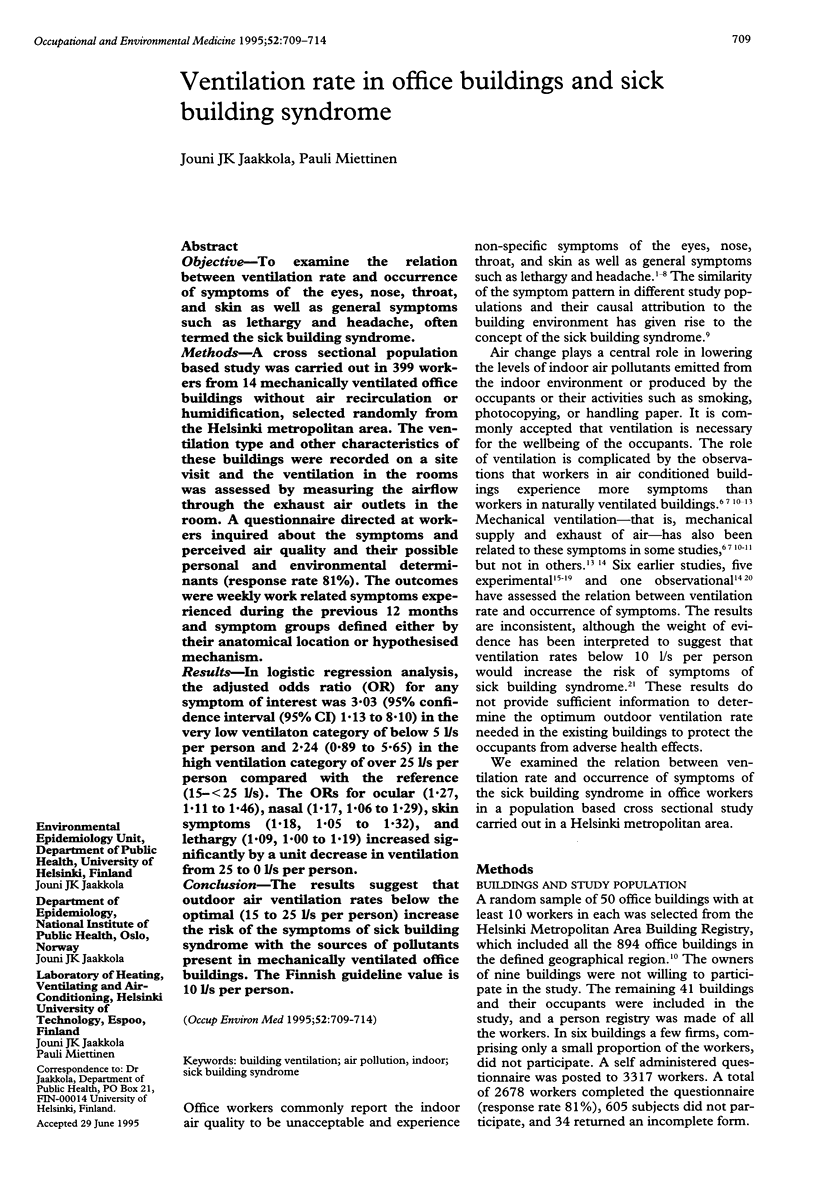
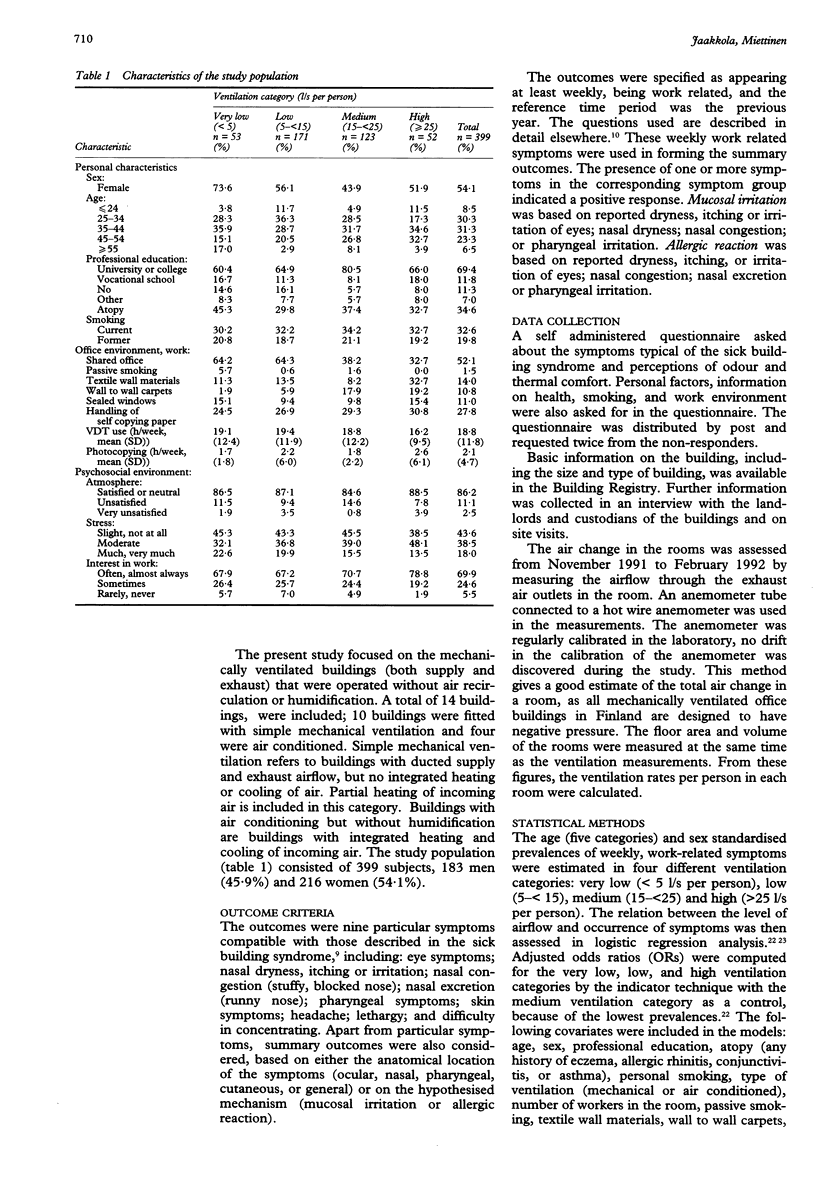
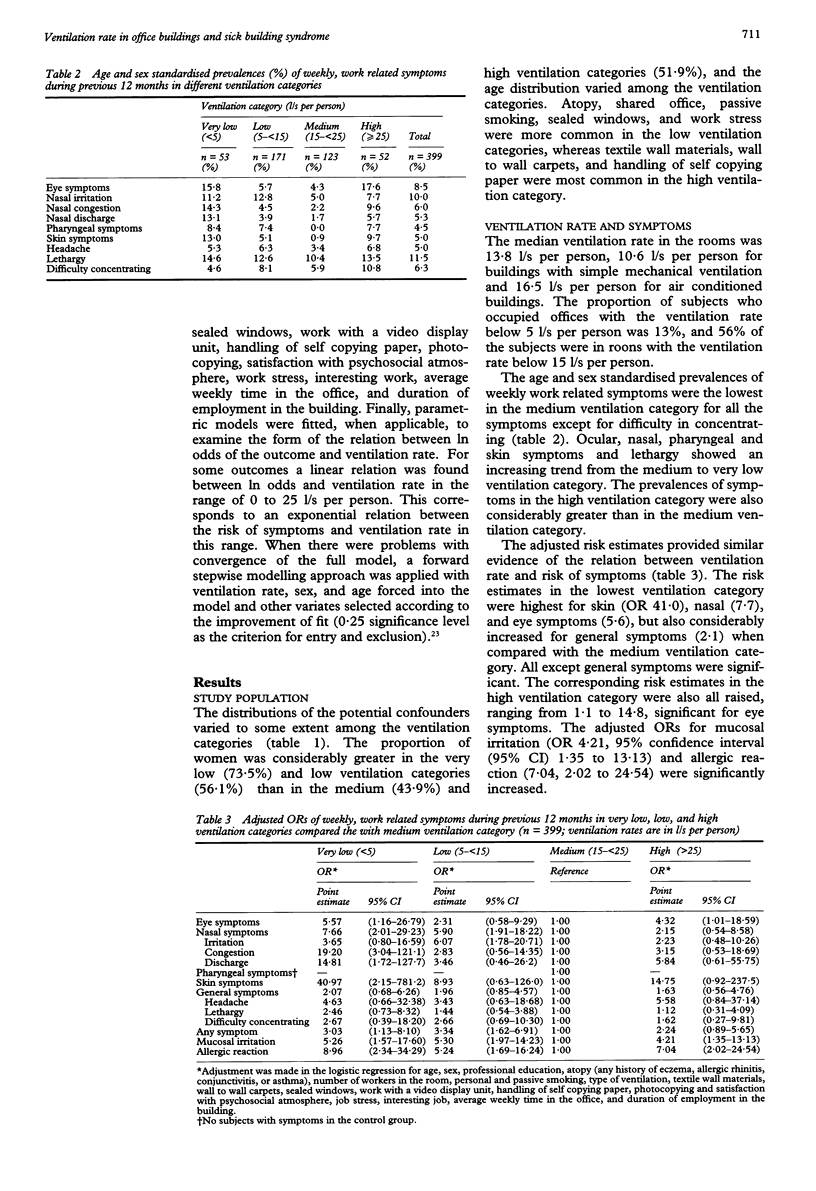

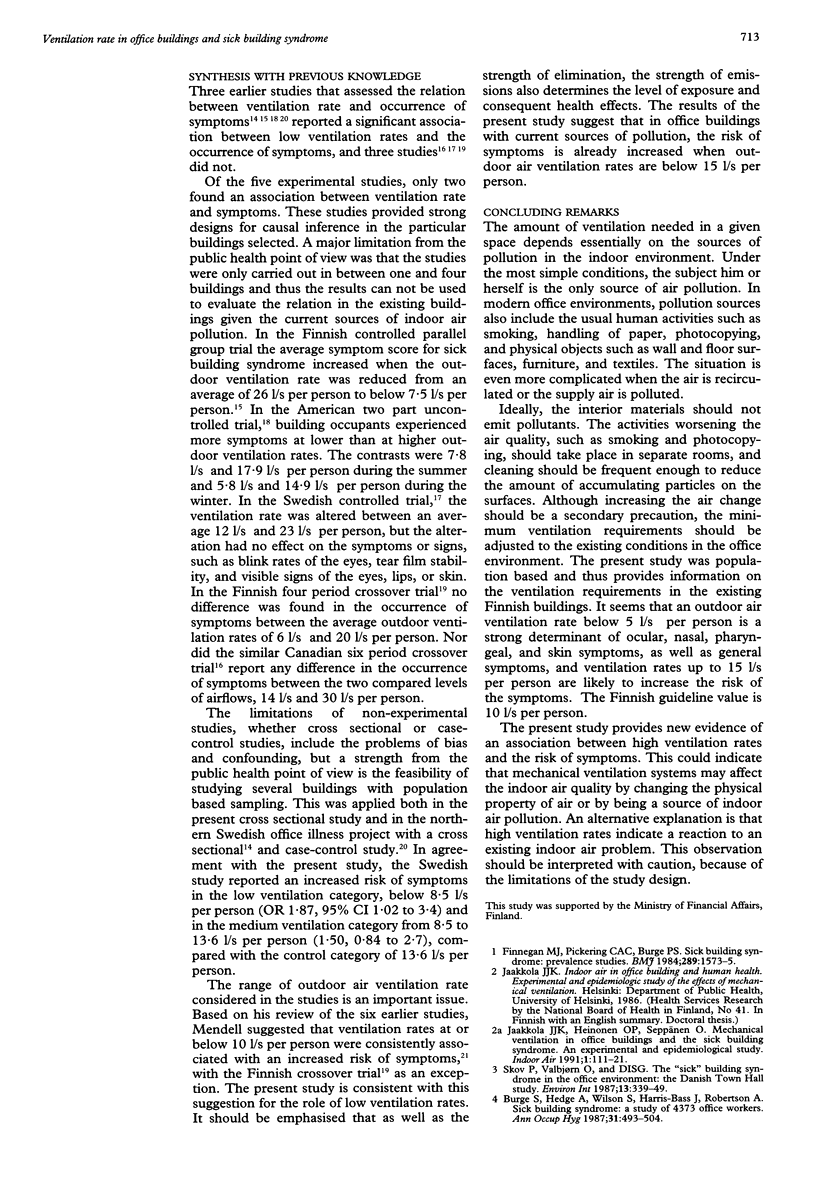
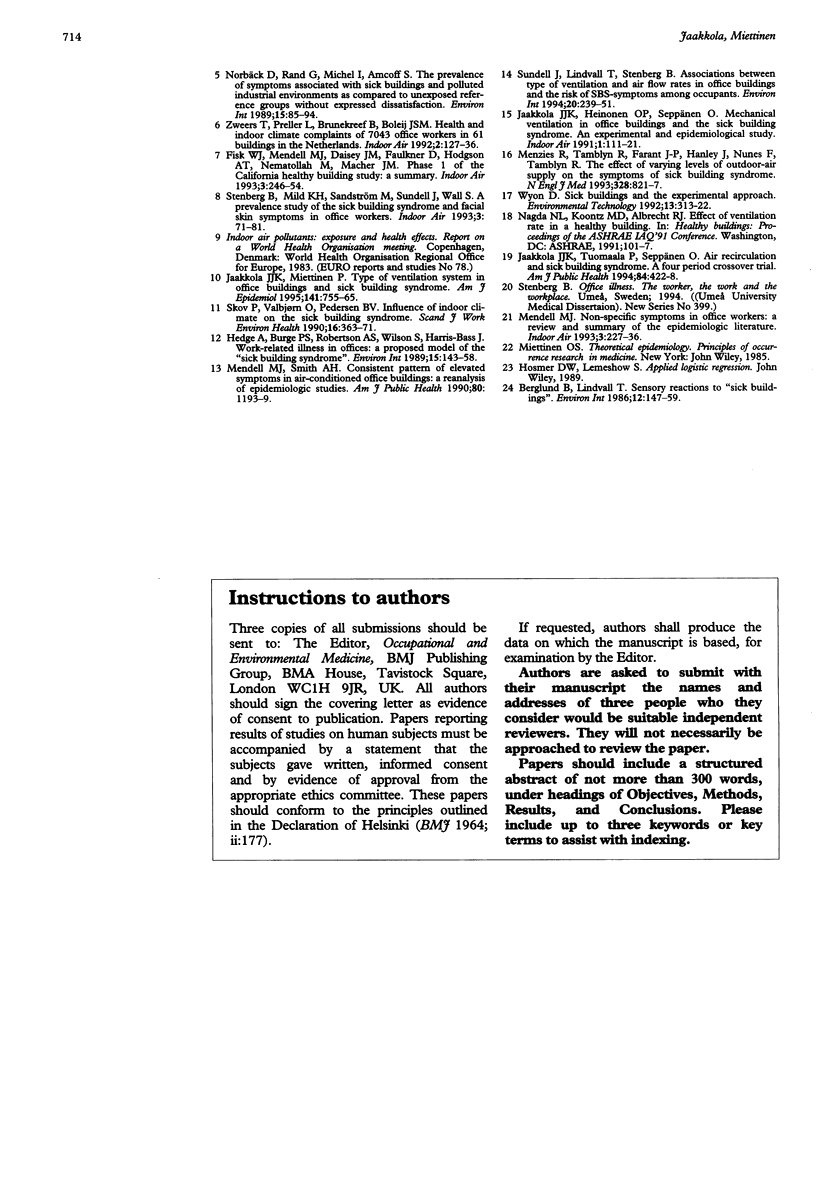
Selected References
These references are in PubMed. This may not be the complete list of references from this article.
- Burge S., Hedge A., Wilson S., Bass J. H., Robertson A. Sick building syndrome: a study of 4373 office workers. Ann Occup Hyg. 1987;31(4A):493–504. doi: 10.1093/annhyg/31.4a.493. [DOI] [PubMed] [Google Scholar]
- Finnegan M. J., Pickering C. A., Burge P. S. The sick building syndrome: prevalence studies. Br Med J (Clin Res Ed) 1984 Dec 8;289(6458):1573–1575. doi: 10.1136/bmj.289.6458.1573. [DOI] [PMC free article] [PubMed] [Google Scholar]
- Jaakkola J. J., Miettinen P. Type of ventilation system in office buildings and sick building syndrome. Am J Epidemiol. 1995 Apr 15;141(8):755–765. doi: 10.1093/oxfordjournals.aje.a117498. [DOI] [PubMed] [Google Scholar]
- Jaakkola J. J., Tuomaala P., Seppänen O. Air recirculation and sick building syndrome: a blinded crossover trial. Am J Public Health. 1994 Mar;84(3):422–428. doi: 10.2105/ajph.84.3.422. [DOI] [PMC free article] [PubMed] [Google Scholar]
- Mendell M. J., Smith A. H. Consistent pattern of elevated symptoms in air-conditioned office buildings: a reanalysis of epidemiologic studies. Am J Public Health. 1990 Oct;80(10):1193–1199. doi: 10.2105/ajph.80.10.1193. [DOI] [PMC free article] [PubMed] [Google Scholar]
- Menzies R., Tamblyn R., Farant J. P., Hanley J., Nunes F., Tamblyn R. The effect of varying levels of outdoor-air supply on the symptoms of sick building syndrome. N Engl J Med. 1993 Mar 25;328(12):821–827. doi: 10.1056/NEJM199303253281201. [DOI] [PubMed] [Google Scholar]
- Skov P., Valbjørn O., Pedersen B. V. Influence of indoor climate on the sick building syndrome in an office environment. The Danish Indoor Climate Study Group. Scand J Work Environ Health. 1990 Oct;16(5):363–371. doi: 10.5271/sjweh.1772. [DOI] [PubMed] [Google Scholar]


